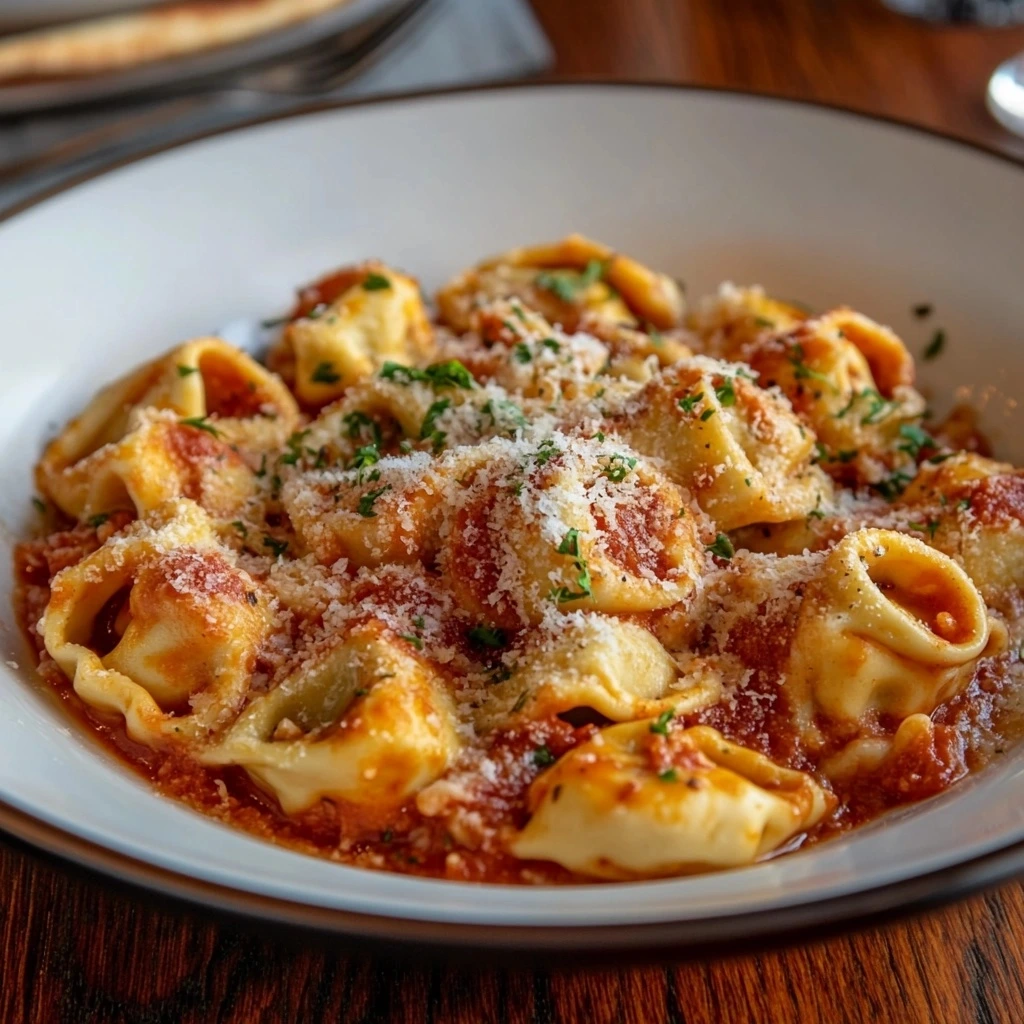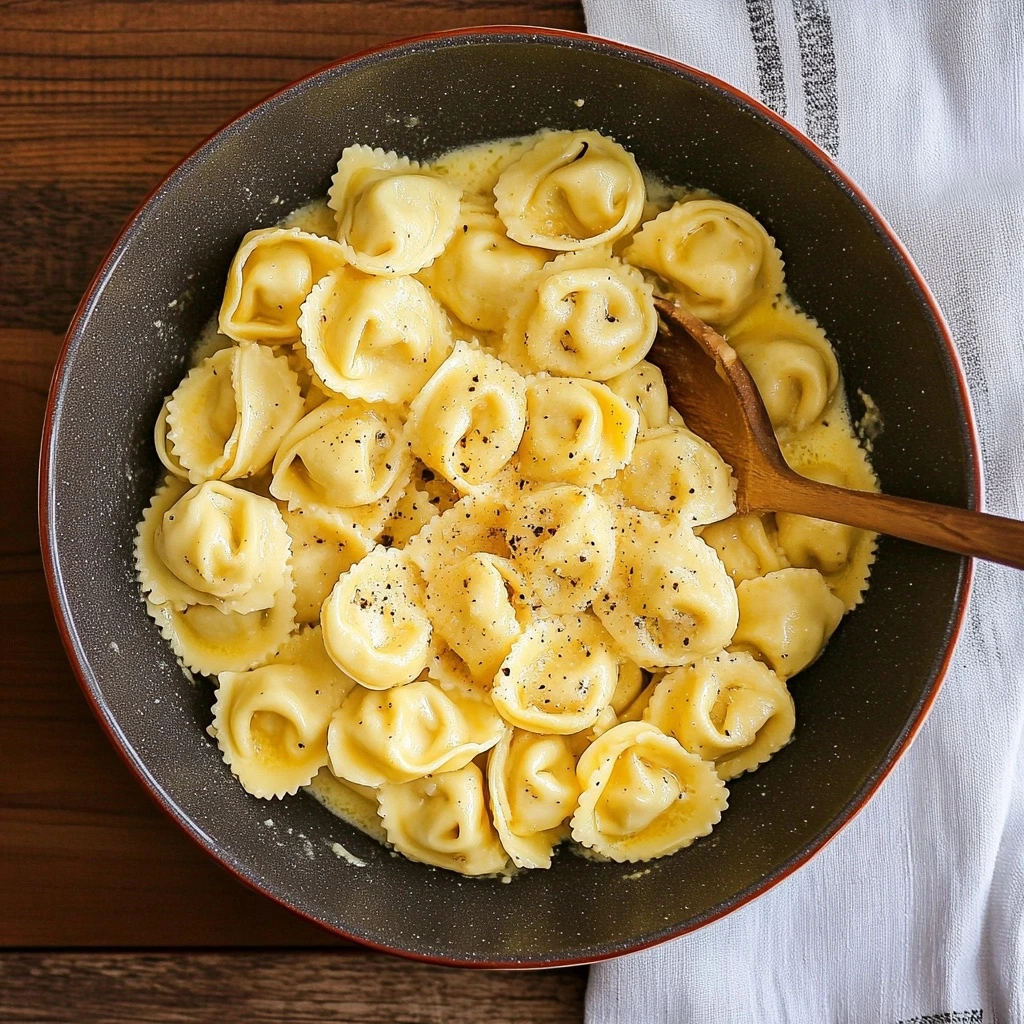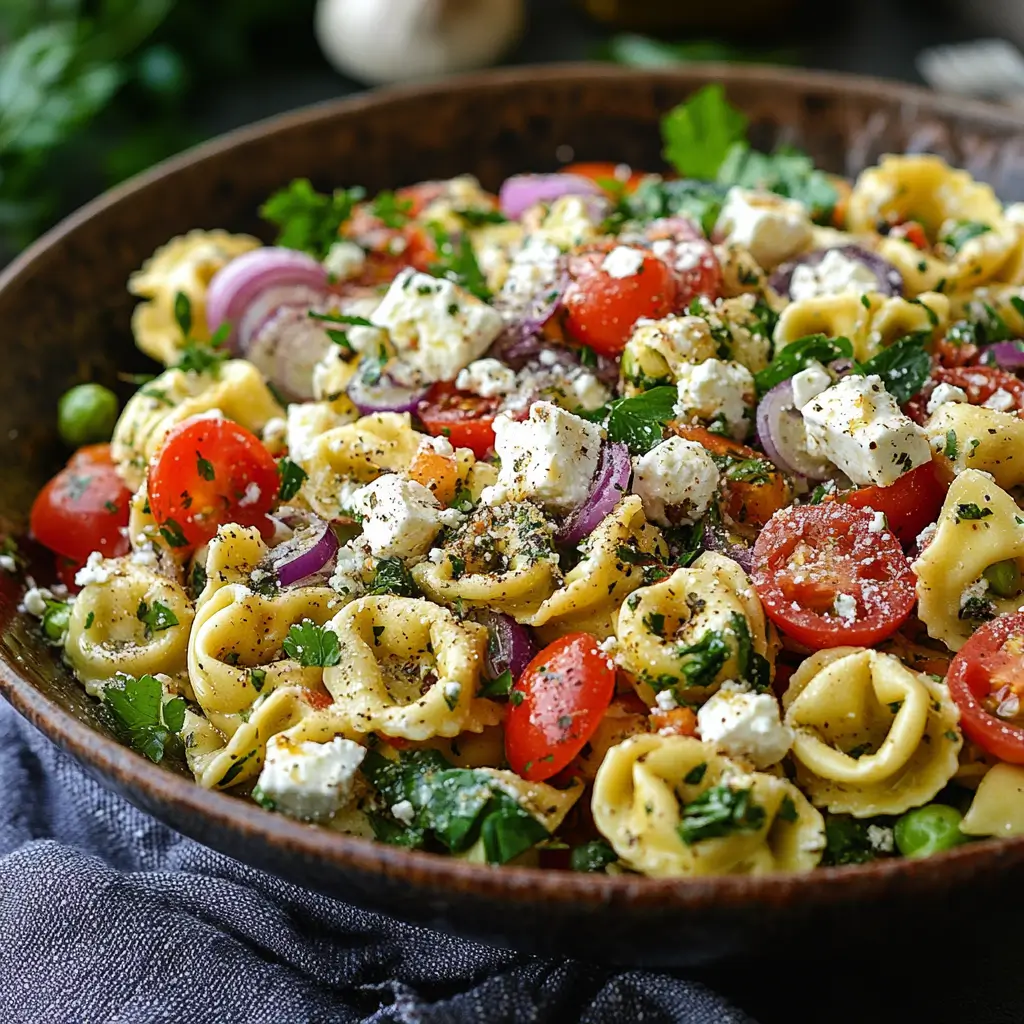Tortellini, those delightful pasta pillows filled with cheese or other savory ingredients, hold a special place in the hearts (and bellies) of many pasta lovers. But when it comes to enjoying tortellini, the question arises: Can you eat cold cheese tortellini? The answer is an enthusiastic yes! In this article, we’ll dive into the world of cold cheese tortellini, covering everything from safety tips to scrumptious recipes. Let’s begin with the basics of this versatile pasta and discover why it’s more than just a warm comfort food.
Table of contents
Understanding Cheese Tortellini
What is Cheese Tortellini?
Cheese tortellini is a traditional Italian pasta shaped like little rings or purses, filled with creamy cheese mixtures such as ricotta, Parmesan, or mozzarella. These pasta gems hail from the Emilia-Romagna region of Italy, where they’ve been a staple for centuries. While traditionally served in hot broths or with warm sauces, tortellini is versatile enough to be served cold, making it perfect for salads and chilled dishes.

The fillings in cheese tortellini can vary, with some blends including mascarpone, Asiago, or even goat cheese for added richness. This diversity of flavors makes it a favorite across households, regardless of preparation style.
How Cheese Tortellini is Typically Served
While most people associate tortellini with steaming bowls of soup or creamy pasta dishes, it’s also enjoyed cold in various cuisines. When served hot, it’s often paired with hearty sauces like marinara, Alfredo, or pesto. Cold cheese tortellini, on the other hand, shines in pasta salads or as a quick snack straight from the fridge.
You’ll often find cold tortellini paired with fresh vegetables, tangy dressings, or even proteins like chicken or salami. Its adaptability makes it a popular choice for picnics, potlucks, and busy weeknight dinners. Whether warm or cold, tortellini is a dish that satisfies both taste buds and appetites.
Eating Cheese Tortellini Cold
Is It Safe to Eat Cold Cheese Tortellini?
The good news is that yes, it’s perfectly safe to eat cold cheese tortellini, provided it’s been handled correctly. Whether you cooked it the night before or stored leftovers in the fridge, tortellini can be a convenient and tasty option when served cold. The key is to make sure it’s cooked properly first and then cooled and stored in an airtight container to prevent contamination.

Cold pasta is often enjoyed by people on the go or those looking for quick meal prep ideas. To keep your tortellini fresh and safe, always refrigerate it within two hours after cooking. If you’re pulling it straight from the fridge, give it a quick check to ensure it hasn’t dried out or absorbed too much moisture. Proper storage makes all the difference when enjoying cold dishes.
Why Some People Enjoy It Cold
For many, cold cheese tortellini is a convenient and satisfying option. Whether you’re rushing to work or packing a picnic, it’s a grab-and-go meal that doesn’t require reheating. Plus, the chilled pasta takes on a slightly firmer texture, giving it a satisfying bite.
From a culinary perspective, serving tortellini cold allows the flavors of accompanying dressings or sauces to shine. A tangy vinaigrette, for instance, clings to the pasta better when cold, enhancing its taste. Additionally, when served with fresh veggies or protein, cold tortellini makes for a balanced, wholesome meal. So, can you eat cold cheese tortellini? Absolutely! It’s a delicious and practical option. How Long Does Tortellini Pasta Salad Last?
Popular Cold Cheese Tortellini Recipes
Cheese Tortellini Pasta Salad Recipes
Cold cheese tortellini shines brightest in pasta salads. These dishes are easy to make, versatile, and packed with flavor. A basic recipe might include cooked and chilled tortellini, cherry tomatoes, cucumbers, red onions, and a zesty Italian dressing. Toss it all together, and you’ve got a refreshing meal perfect for summer picnics or quick lunches.Greek Tortellini Pasta Salad

To mix things up, try swapping out the dressing for a creamy ranch or Caesar blend. You can also add extras like shredded carrots, olives, or shredded Parmesan for a richer taste. Pasta salads are a foolproof way to enjoy cold tortellini while showcasing its adaptability.
Mediterranean-Style Tortellini Salad
If you’re craving bold flavors, a Mediterranean-style salad is the way to go. This dish combines chilled tortellini with fresh spinach, kalamata olives, sun-dried tomatoes, and feta cheese. Drizzle it with olive oil and red wine vinegar, then sprinkle some oregano for a finishing touch. The result? A tangy, vibrant salad that’s as nutritious as it is delicious.
Mediterranean-style tortellini salads are not only easy to prepare but also make excellent make-ahead meals. The longer the flavors meld in the fridge, the tastier the dish becomes. Talk about convenience and flavor in one bowl!
Creative Ways to Serve Cold Cheese Tortellini
Sometimes, it’s fun to think outside the bowl. Cold cheese tortellini can be served as skewers, paired with fresh mozzarella, cherry tomatoes, and basil for a fun appetizer. Or, mix it with sweet corn and diced avocado for a Tex-Mex-inspired twist. The possibilities are endless.
For those who like experimenting, consider adding fruits like mandarin oranges or cranberries to your salad. The sweetness balances the savory tortellini beautifully, creating a unique and memorable dish.

With so many options, can you eat cold cheese tortellini creatively? The answer is a resounding yes!
Nutritional and Culinary Insights
Nutritional Value of Cheese Tortellini
Cheese tortellini is more than just a treat for your taste buds—it’s a source of balanced nutrition too. Made with ingredients like enriched wheat flour, eggs, and cheese, it provides a good mix of carbohydrates, protein, and fats. On average, a serving of cheese tortellini contains around 200 calories, with approximately 8 grams of protein and 2 grams of fiber. These nutrients make it a filling option for meals.
However, the nutritional profile of tortellini can vary based on the preparation method and added ingredients. For instance, pairing it with a light vinaigrette keeps the calorie count lower than using creamy sauces. Whether served hot or cold, cheese tortellini is a satisfying dish that can fit into a balanced diet.
Pairings That Enhance Flavor
Cold cheese tortellini can stand alone as a dish, but why stop there? Pairing it with the right sides or toppings can elevate the experience. Fresh vegetables like bell peppers, cherry tomatoes, and spinach add crunch and color, while proteins like grilled chicken or shrimp make it heartier.
For a lighter meal, toss the tortellini with olive oil, lemon juice, and herbs. Prefer something indulgent? Add bacon bits, grated Parmesan, or creamy Caesar dressing. With so many options, cold tortellini can adapt to suit any palate.
FAQs
Can You Eat Cold Cheese Tortellini Straight from the Fridge?
Absolutely! Many people enjoy cold tortellini straight from the fridge as a quick snack or easy meal. Just ensure it was cooked and stored safely. If it feels too dry, a drizzle of olive oil or a splash of lemon juice can revive its flavor. Cold tortellini is both convenient and satisfying.
Does Eating Cold Tortellini Affect the Texture?
Yes, eating tortellini cold does slightly alter its texture. When chilled, the pasta firms up, giving it a pleasant chewiness. This texture pairs beautifully with crunchy veggies and tangy dressings in pasta salads. If you prefer a softer bite, allow the tortellini to rest at room temperature for a few minutes before eating.
What Are the Best Dressings for Cold Tortellini?
The dressing you choose depends on your flavor preference. Light vinaigrettes with olive oil and balsamic vinegar are classics, adding brightness without overpowering the dish. Creamy dressings like ranch or Caesar offer richness, making the dish feel indulgent. Want something unique? Try a pesto-based dressing or a spicy sriracha mayo for a bold kick.
Is It Safe to Reheat Tortellini?
Absolutely! Reheat tortellini in the microwave, on the stovetop, or in the oven. For best results, add a splash of water or sauce to keep it moist. Be sure to heat it to an internal temperature of 165°F (74°C) for food safety.
Can Tortellini Be Frozen After Cooking?
Yes, cooked tortellini can be frozen for later use. Allow it to cool completely, then store it in a freezer-safe container or bag. To reheat, thaw in the fridge overnight and warm it up with your favorite sauce or broth.
Can Tortellini Be Grilled or Pan-Fried?
Yes! Skewer cooked tortellini for a fun grilled appetizer or snack. Alternatively, pan-fry it in a little oil or butter until golden and crisp. Serve it as a crunchy side dish or with dipping sauces for a unique twist.
How Long Can Tortellini Be Stored in the Fridge?
Cooked tortellini can be stored in an airtight container in the fridge for up to 3-5 days. To maintain freshness, keep it separate from sauces and add them just before serving.
Final Thoughts and Serving Tips
Key Takeaways on Eating Cold Cheese Tortellini
So, can you eat cold cheese tortellini? Without a doubt! Whether you’re a fan of quick snacks, refreshing pasta salads, or creative recipe twists, cold tortellini is a versatile and delicious option. Its unique texture and ability to absorb flavors make it an excellent base for countless dishes.
Experiment and Enjoy
Don’t be afraid to get creative! Toss it with fresh veggies, drizzle it with your favorite dressing, or try an unconventional pairing like fruit or nuts. Cold cheese tortellini offers endless possibilities—so grab a fork and enjoy this pasta in all its chilled glory.

